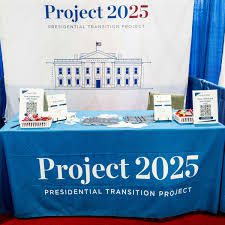 Project 2025 and Its Potential Impact on Marriage and Divorce
Project 2025 and Its Potential Impact on Marriage and Divorce
Project 2025 and its potential impact on marriage and divorce have sparked significant debate, particularly regarding the proposed changes to no-fault divorce laws and their implications for families.
The goal of Project 2025, which was started by conservative organisations to influence American politics, is to enact significant changes by 2025. Although its core goals centre on federal agency transformation and governance, its effects extend far into private spheres, such as marriage and divorce. This blog examines how the suggested modifications can alter family dynamics, society standards, and the laws pertaining to marriage and divorce.
What is Project 2025?
Project 2025, spearheaded by the Heritage Foundation, is a comprehensive plan to overhaul federal institutions and realign them with conservative ideologies. It proposes policy reforms in areas such as family structure, religious freedom, and education. While it doesn’t explicitly focus on divorce, its emphasis on traditional family values and reshaping federal guidelines could lead to new laws that affect marriage and family courts, impacting divorce rates and proceedings.
1. Reaffirming Traditional Marriage Structures
Project 2025 emphasizes strengthening traditional marriage roles, with a push toward values rooted in religious and conservative perspectives. Policies under this initiative could incentivize marriage through tax breaks or other benefits while discouraging divorce. This could impact couples by adding additional barriers to divorce or mandating longer waiting periods, especially in cases without mutual consent.
2. Restrictions on No-Fault Divorce?
One of the speculated outcomes is a restriction on no-fault divorce, a process that allows couples to end a marriage without attributing blame to either party. While proponents argue that such restrictions could strengthen commitment, critics highlight that they may force individuals into prolonged, unhappy marriages, especially in cases of abuse or irreconcilable differences.
3. Family Court Reform and Custody Battles
Project 2025 advocates for a shift in how family courts handle cases, favoring joint custody and minimizing intervention. This could streamline the divorce process for amicable separations but may complicate proceedings in contested divorces. Parents could face stricter guidelines on custody sharing, potentially prioritizing family unity over personal autonomy.
4. Economic and Social Implications
If Project 2025 succeeds, its policies may make divorce less accessible or more stigmatized. For those in abusive relationships, this could lead to economic dependence on a spouse, increasing financial burdens, especially for stay-at-home partners or those with limited financial independence. Additionally, the cost of divorce could rise due to added legal complexities and procedural hurdles, potentially deterring some couples from seeking separation.
5. Religious Freedom and the Influence on Family Laws
Project 2025 seeks to ensure religious freedom across all aspects of life, and this might extend into marriage laws, allowing religious institutions a greater say in marital policies. This could reinforce the significance of marriage in religious communities while complicating divorce proceedings, especially if faith-based reconciliation processes become integrated into civil proceedings.
Project 2025 is a bold plan with wide-reaching potential. By influencing marriage and divorce laws, it could reshape the structure of American families in ways both empowering and restrictive. As the project unfolds, its effects on marriage, divorce, and individual freedom within family structures will become clearer, signaling an evolving future for American households.
Frequently Asked Questions About Project 2025 and Its Potential Impact on Marriage and Divorce
1. What is Project 2025?
Project 2025 is an initiative led by conservative think tanks, including the Heritage Foundation, aimed at transforming U.S. federal agencies and policies to align with traditional values by 2025. The project encompasses reforms in various sectors, such as family law, education, and religious freedom, and could significantly influence marriage and divorce norms by encouraging traditional family structures.
2. How could Project 2025 impact no-fault divorce?
Project 2025 may promote policies that discourage or restrict no-fault divorce, which currently allows couples to end a marriage without assigning blame. By potentially adding barriers to divorce, such as mandated counseling or longer waiting periods, the project could make it more challenging for couples to separate, especially in situations lacking mutual consent.
3. Will Project 2025 affect family court rulings and child custody?
Yes, Project 2025 advocates for family court reforms that might emphasize joint custody and prioritize minimizing judicial intervention in family matters. This approach could simplify the process for cooperative divorces but might complicate cases involving custody disputes, as courts could place a stronger emphasis on maintaining family unity.
4. Could Project 2025’s policies impact financial independence after divorce?
If Project 2025 leads to policies that make divorce less accessible, it could financially impact individuals in marriages, particularly those without financial independence. Economic incentives or penalties for divorce could affect one’s ability to leave a marriage, possibly making it harder for partners, especially those in abusive or dependent relationships, to achieve financial autonomy post-divorce.
5. How does Project 2025 involve religious perspectives in family law?
Project 2025 strongly emphasizes religious freedom, which may extend to marriage and divorce laws. This could result in policies that align with traditional religious views on marriage, potentially influencing marital expectations and making religious or faith-based reconciliation processes more common in family law cases.


Leave a Reply